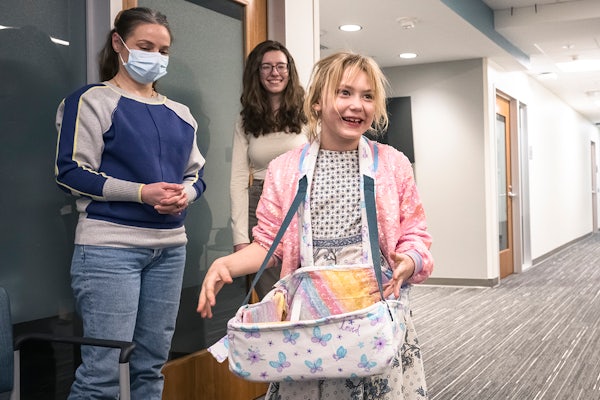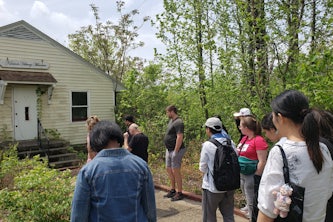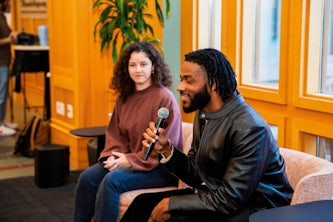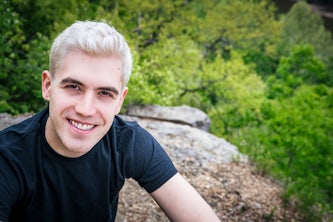Engineering, OT students work with patients to design assistive tech
Inaugural Make-A-Thon produces functional devices for St. Louisans with physical challenges

Team Rainbow Butterfly Rangers was on a mission — to create an assistive technology device that would help Berlin, a bubbly 6-year old with cerebral palsy, carry her plates and toys. Per Berlin’s instructions, the device should be stable, easy to wear and — oh yeah — super cute.
“She asked and we delivered,” said Yewon Lee, an occupational therapy student at Washington University School of Medicine in St. Louis, as she demonstrated the team’s prototype, a wearable tray covered in plush butterfly and rainbow fabrics. “It’s soft and cute, obviously. But it also is functional, with adjustable shoulder straps and waist straps. And it was sewn with love.”
The Rainbow Butterfly Rangers were one of eight teams of Washington University in St. Louis students who participated in the inaugural Assistive Tech Make-A-Thon, a collaboration between the Department of Biomedical Engineering and the Spartan Light Metals Product Makerspace in the McKelvey School of Engineering and the WashU Medicine Program in Occupational Therapy (OT). The teams had one week to design and build an assistive device in the Spartan Light Metal Products Makerspace that met the specific needs of current WashU OT patients and community members who served as co-designers. Other co-designers included a man with a spinal cord injury who wanted a modified dressing stick; a baby with motor delays who needs his tummy supported as he learns to crawl; a man with severe facial pain who wanted a hood that protects him from cold but does not touch his skin; and a WashU OT student and Make-A-Thon participant who is visually impaired and needs a goniometer, which measures range of motion, that is easy to read.
The teams presented their final prototypes to their co-designers Feb. 7 on the Medical Campus. Cecropia Strong, a national nonprofit that assists disabled individuals, served as a co-sponsor.
“Our OT and engineering students think and look at projects differently,” said Marit Watson, an instructor in occupational therapy and one of the Make-A-Thon organizers. “It was exciting to see how much they learned from one another and from their co-designers. The care they took to communicate with their co-designers really showed up in the final products.”
For team Rainbow Butterfly Rangers, communication with Berlin and her mom, Laural Duellman, was key. The members learned that Berlin struggles with buttons and buckles, so their design would need to be easy to put on. Balance, they discovered, also is a challenge, so they wanted to make their product soft in case of falls. After brainstorming and sketching dozens of ideas, team members came up with something that looks like the trays popcorn vendors use at the ballpark. They wrapped the tray in an old yoga mat and encased it in a washable sleeve of pretty fabrics.
Read the full story here.




